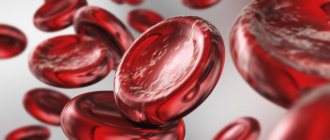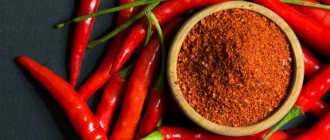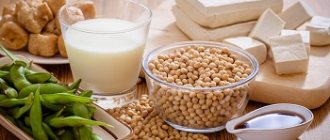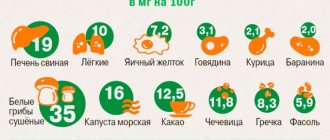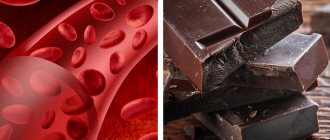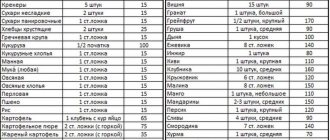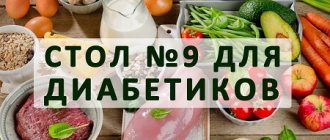Everyone knows that young children are picky eaters, but there are many iron-rich foods that even the pickiest little ones will appreciate.
Young children refuse food for a variety of reasons - it may be too red or too green, too mushy, etc. Parents, of course, worry about the insufficient supply of nutrients that their children’s growing bodies need.
Iron deficiency is a fairly common problem in children, and according to statistics, about 8 percent of babies are iron deficient.
In this article, you will learn how much iron babies need, 11 iron-rich foods, as well as recipes and ways to include these foods in your baby's diet.
WHAT AMOUNT OF IRON DO BABIES NEED?
According to the National Institutes of Health, children should get the following amounts of iron in milligrams (mg) daily:
- Infants 7-12 months - 11 mg
- Infants aged 1-3 years - 7 mg
- Children aged 4-8 years - 10 mg
However, the recommended amount of iron varies depending on the foods babies eat.
There are two types of iron: heme and non-heme. Heme iron is found only in animal products, such as meat and seafood. Non-heme iron is found in plant foods and fermented foods.
Both forms of iron can help a person meet their daily iron requirement. However, heme iron is more easily broken down by the body. For this reason, people who get their iron from non-animal sources, including vegans, vegetarians, and picky toddlers, should consume 1.8 times the amount of iron recommended for their age group.
Normal hemoglobin level in the blood for children
The amount of iron-containing protein, which ensures the coordinated functioning of the whole body, is determined blood test . Red blood pigment level is an indirect measurement of a patient's red blood cell count. Just like the number of red cells in the blood, the hemoglobin content may vary.
The age of children, the individual characteristics of the child’s body, and various pathologies affect the amount of iron-containing substances in the blood. A decrease in its level is a signal from the body about deficiency . The level is measured in grams per liter (g/l).
Table. Child's age and hemoglobin (Hgb) levels
| Age | Content standard Hgb per unit of blood (g/l) |
| 0-14 days | 145-215 |
| 14 days-1 month | 107-180 |
| 1-2 months | 100-130 |
| 2-3 months | 90-140 |
| 3-6 months | 95-135 |
| 6-12 months | 105-140 |
| 1-2 years | 105-145 |
| 3-6 years | 110-150 |
| 7-12 years | 115-150 |
| 13-15 years old | 115-160 |
| 16-18 years old | 117-166 |
Note that a deviation from the norm in the amount of hemoprotein in the blood is not the source of a certain disease, but its consequence. To increase the level (concentration), you need to understand the causes of disorders in the body. They can be very different - from an unbalanced diet to serious pathologies.
Other Important Recommendations
Almost all metabolic processes in the body are accelerated when the level of vitamin D in the blood increases (as it helps accelerate the absorption of calcium and its concentration gradually decreases).
Therefore, doctors recommend walking outdoors as often and as much as possible , as well as sunbathing (with caution for children under 3 years old, since their skin is practically not protected from ultraviolet radiation and it is extremely easy to get burned).
You can also increase hemoglobin through active games and physical activity - all this also speeds up the absorption of proteins and amino acids, which precisely enter into a biochemical reaction with iron molecules.
It is also important to adhere to activity and rest regimes - blood is mainly produced at night during sleep. Therefore, the child needs to follow a routine and go to bed at the same time every day.
You can also increase hemoglobin using hematogen - this is a kind of dessert obtained from the formed elements of the blood of cattle. Sold in the form of candies or chocolates in pharmacies, it can be given to children aged 2 years and older (this information should be specified in the instructions).
There are also special variations of hematogen with a high content of iron and B vitamins - this can be used in the active treatment of anemia.
Increased and decreased hemoglobin levels: why it happens, how to recognize
Both increased and decreased hemoprotein concentrations have a negative impact on well-being.
Causes and signs of increased hemoglobin
If the bone marrow produces too many red blood cells (polycythemia vera), hemoglobin levels may rise. Also, excess protein in red blood cells can be observed with:
- lung diseases;
- heart pathologies;
- kidney tumors;
- congenital organ anomalies;
- dehydration, etc.
At the initial stages, signs of increased hemoprotein are not always noticeable. Lack of treatment can lead to the development of peripheral cyanosis in the child. The condition is characterized by bluish skin on the lips and fingertips. With a lack of oxygen in the tissues, children become distracted and lose interest in new knowledge. Their vision and hearing deteriorate, their limbs go numb, they tend to bruise, and their face becomes reddish.
Causes and signs of low hemoglobin
A decrease in hemoglobin concentration in the blood is associated with insufficient intake and/or incomplete absorption by the child’s body of:
- proteins (animal and vegetable);
- gland;
- vitamins (especially B12);
- microelements.
If the baby’s body has insufficient reserves of any of the substances (especially iron), the formation of red blood cells and protein compounds is disrupted, and anemia may develop. The reasons for improper protein formation are often frequent colds. During periods of illness, iron from food may not be completely absorbed.
You can suspect anemia in a child by weakness , fatigue , pale skin, and loss of appetite.
